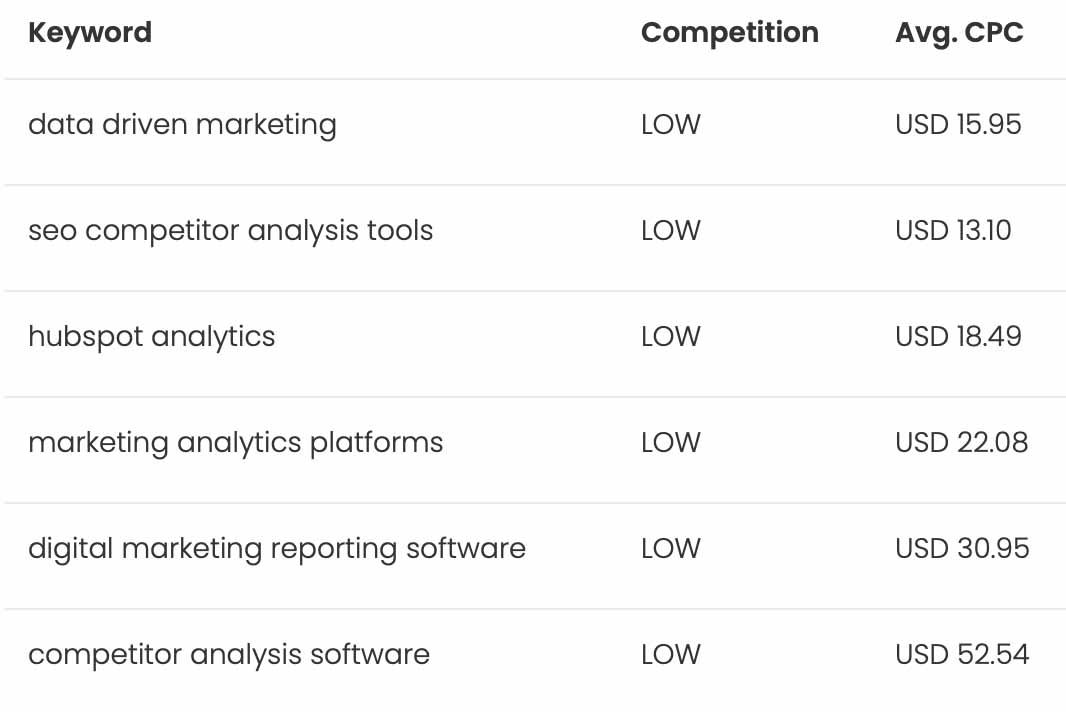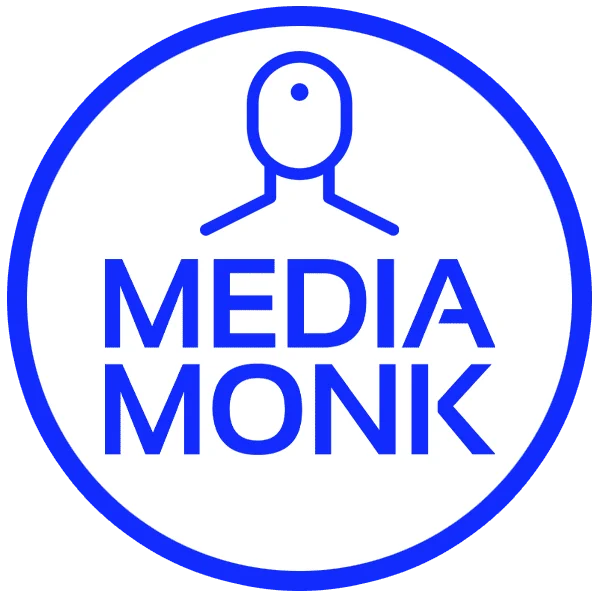Learn how Media Monk’s integration with the Google Ads Keyword Ideas API brings a whole new level of sophistication toward content marketing planning with deep insights into the role of Keywords.
Table of Contents
Understanding Keyword Research Jargon
Media Monk’s Content Ideas tool is designed to help marketers build and execute sophisticated content marketing strategies for boosting their (or their clients’) organic rankings on search platforms. Before we begin, let’s get familiar with common words you’ll come across in the Content Ideas section:
Keyword: A word or phrase that users enter into search engines to find information. Keywords are central to SEO and content marketing strategies.
Long-tail Keyword: Longer and more specific keyword phrases. They often have lower search volume but higher conversion rates due to their specificity.
Search Volume: The number of searches that a particular keyword receives within a given timeframe. It indicates the popularity or demand for the keyword.
Keyword Difficulty: A metric that estimates how hard it would be to rank for a particular keyword in search engine results pages (SERPs). Higher values indicate more competition.
CPC (Cost Per Click): The average cost advertisers pay each time a user clicks on their ad for a specific keyword. It’s often used to gauge the commercial value of a keyword.
SERP (Search Engine Results Page): The page displayed by search engines in response to a user’s query. It contains organic search results, paid ads, and other SERP features
Organic Search: Unpaid search results that appear in SERPs based on their relevance to the search query, as determined by the search engine’s algorithm.
LSI Keywords (Latent Semantic Indexing): Related keywords or phrases that search engines use to understand the content on a webpage. They help improve SEO by providing context.
Keyword Cluster: A group of related keywords that cover a specific topic. Targeting keyword clusters can improve content relevance and SEO performance.
Intent: The purpose behind a search query, such as seeking information, making a purchase, or finding a particular website. Understanding intent is crucial for content targeting.
Low Bids and High Bids
In the context of keyword research for content marketing planning, understanding metrics like Low Bids (translates to “lowTopOfPageBid” for those familiar with Google Ads) and “High Bids” (translates to “highTopOfPageBid“) can be crucial for strategizing your content and advertising efforts effectively. Media Monk’s Content Ideas tool provides these metrics to help marketers understand the deeper relevance of High and Low bids in the context of content marketing planning. Media Monk extracts this data from the Google Ads Keyword Planning API, tapping into arguably the most accurate search metrics tool.
Low Bids
- Concept: This metric represents the lower end of the bid range that advertisers have historically paid for their ads to appear at the top of the first page of search results for a specific keyword. It’s an estimate, so actual costs can vary, but it provides a baseline or minimum you might expect to pay to position your ad prominently for that keyword.
- Content Marketing Implication: For content marketers, a low “Low Bids” suggests that competition for advertising space on this keyword is relatively lower or the keyword is not highly commercial. This could indicate an opportunity to create content optimized for this keyword, potentially achieving organic rankings more easily or entering the paid search space at a lower cost.
High Bids
- Concept: Conversely, this metric indicates the higher end of the bid range that advertisers have paid for their ads to be prominently displayed at the top of the first page for a given keyword. It reflects a more competitive or in-demand keyword where advertisers are willing to pay more for visibility.
- Content Marketing Implication: A high “High Bids” suggests that the keyword is highly valuable, likely due to its potential to drive conversions or its overall commercial intent. For content marketers, this signals that the keyword is competitive, and ranking organically might be challenging. However, it also indicates that content optimized for this keyword could drive significant value if it ranks well or if the marketer decides to invest in paid advertising.
Strategic Use in Content Marketing
- Balancing Cost and Opportunity: By understanding these bid ranges, content marketers can better assess the cost-benefit ratio of targeting specific keywords within their content and PPC campaigns. Keywords with a low “Low Bids” might offer cost-effective opportunities for visibility, while those with a high “High Bids” might require more investment but offer greater rewards.
- Content Planning and Keyword Selection: These metrics can guide the selection of keywords around which to build content. For example, targeting keywords with a reasonable “Low Bids” but with enough search volume might offer an excellent opportunity for organic content to gain visibility. Conversely, understanding “High Bids” can help in prioritizing high-value topics that might justify the investment in both high-quality content and paid search strategies.
- Budget Allocation: For businesses with limited budgets, focusing on keywords with lower top-of-page bids can be a strategic way to maximize visibility and engagement. It helps in allocating resources more efficiently by targeting keywords where the cost of entry is lower.
Low and High Bids provide valuable insights into the competitive landscape of keywords within search advertising. When used strategically in content marketing planning, these metrics can help in identifying opportunities for organic content development, budgeting for paid campaigns, and optimizing overall marketing strategies for better ROI.
Understanding HIGH competition and LOW search volume in keyword research

In keyword research, keywords with high competition but low search volume represent a unique challenge and opportunity in SEO and digital marketing strategies. Here’s what this combination typically indicates:
- Niche Market: These keywords often pertain to very specific, niche markets or topics. The audience looking for this content is smaller, but the subject matter is highly relevant to them.
- Highly Competitive Space: Despite the low search volume, the high level of competition indicates that many websites or businesses consider these keywords valuable. This could be due to the potential for high conversion rates or the strategic importance of the keyword within a niche market.
- Difficulty in Ranking: High competition means that it may be difficult and potentially expensive (if using paid search strategies) to rank well for these keywords. Established players might dominate the top search results, making it hard for new entrants to gain visibility.
- Potential for High Value or Conversion: Keywords in this category can be very lucrative if you manage to rank well for them. Because they are so specific, users searching for these terms may be further along in the buying cycle or looking for very specific information, leading to higher conversion rates.
- Quality Over Quantity: Success with these keywords often relies on creating highly targeted, quality content that addresses the specific needs or questions of the searcher. This can lead to building a loyal audience base or customer segment, even if the total number of searches is low.
- SEO Strategy Implications: Targeting these keywords requires a focused SEO strategy. This might involve deep niche market analysis, high-quality content creation, excellent on-page SEO, and strong backlink profiles. The goal is to position your website as the most relevant and authoritative source for the keyword topic.
- Long-Term Investment: Because of the high competition, achieving a high ranking for these keywords might take a significant amount of time and effort. It’s often a long-term investment rather than a quick win.
While high competition and low search volume keywords can be challenging to work with, they offer the potential for high returns if approached with a well-planned strategy and patience. The key is to create exceptional content that truly stands out in the competitive landscape and to continuously optimize your SEO tactics to build and maintain rankings.
LOW competition keywords, with HIGH Cost Per Click

From a keyword research perspective in content marketing planning, encountering “LOW competition keywords, with high CPC (Cost Per Click)” presents a nuanced and potentially advantageous situation. Here’s a breakdown of what this means and how it can influence your content marketing strategy:
Low Competition Keywords
- Definition: Keywords classified as “low competition” are those for which there are fewer pages competing to rank on search engine results pages (SERPs). Essentially, there are not as many articles, blog posts, or web pages targeting these keywords, making it easier for new content to rank well.
- Implication: The lower competition level suggests that it might be easier to achieve a high ranking for your content in organic search results. This can be particularly beneficial for newer or smaller websites that might struggle to compete with more established sites for highly competitive keywords.
High CPC
- Definition: A high CPC indicates that advertisers are willing to pay a significant amount for each click on ads targeting these keywords. This typically reflects the keyword’s potential to convert visitors into customers or leads, implying that the traffic from these keywords is highly valuable.
- Implication: The high CPC suggests that although the search volume might not be as large, the audience searching for these terms is more likely to take action, such as making a purchase or signing up for a service. This is particularly relevant for businesses aiming to maximize the return on investment from their content marketing and paid advertising efforts.
Strategic Considerations for Content Marketing Planning
- Identify Niche Opportunities: Low competition keywords with high CPC offer a sweet spot for content creation. They allow you to target niche segments of your market where you can more easily stand out and capture valuable traffic.
- Content Focus: These keywords can guide the development of highly focused and relevant content that meets the specific needs or interests of your target audience. By addressing these areas, you can improve engagement and conversion rates.
- SEO Advantage: Since these keywords are less competitive, implementing an SEO strategy around them could yield quicker visibility gains in organic search results. This includes optimizing your content for these keywords and building a healthy backlink profile.
- Budget Allocation for PPC: Despite the high CPC, the low competition for these keywords might make them attractive options for PPC campaigns, especially if the high intent behind the searches translates to higher conversion rates.
- Long-Term Value: Ranking for these keywords can bring sustained traffic to your site. Since they are less targeted by competitors, maintaining your position in SERPs could be easier, offering long-term benefits from your initial content creation efforts.
Low-competition keywords with high CPC represent strategic opportunities in content marketing planning. They allow marketers to target specific, high-value audiences with less effort to rank in SERPs and the potential for significant returns, both from organic traffic and potentially from PPC campaigns. It’s a scenario that underscores the importance of thorough keyword research and strategic content planning to identify and capitalize on these opportunities.
Leveraging Low Competition, High CPC Keywords for High Converting Pages
In the landscape of digital marketing, keywords that boast low competition alongside a high Cost Per Click (CPC) indeed signal a pronounced transaction readiness among the searchers. This combination suggests that while fewer entities are vying for these keywords, those who do are prepared to spend significantly, underlining the keywords’ potential for high conversion rates. Such a scenario highlights an opportunity not just for content creation but for strategically designing high-converting pages that directly cater to the intent behind these searches.
Creating content-rich pages specifically tailored to these keywords allows businesses to directly address the needs and intentions of their target audience, facilitating a smoother journey towards conversion. These dedicated pages, focusing on providing comprehensive information, solutions, or products related to the high CPC, low competition keywords, become focal points for users at a decisive stage in their buying process. The specificity and direct relevance of the content to the users’ search queries enhance the likelihood of conversion, making these pages invaluable assets to the website.
Keywords that have low competition (often also implying low search volume) but high CPC is a direct indicator that those keywords have a higher conversion rate due to the active intent behind the person searching for the keyword. Simply put, if you can rank high for such keywords, you can also expect a higher conversion rate – which is why in Media Monk, the Content Ideas tool hunts down such keywords and recommends creating a website page for it.
Furthermore, supplementing these high-converting pages with complementary content on the blog serves a dual purpose. Firstly, it enriches the site’s content ecosystem, offering more entry points for users at various stages of their decision-making process. Secondly, it amplifies the internal linking structure, bolstering the SEO strength of both the main content-rich pages and the supporting blog posts. This interconnected content strategy not only boosts the site’s visibility and authority in search engine results pages (SERPs) but also guides visitors seamlessly towards the information or solutions they seek, thereby enhancing user experience and conversion potential.
In conclusion, the strategic approach of crafting content-rich, high-converting pages for low competition, high CPC keywords, supported by complementary blog content, capitalizes on the unique opportunities these keywords present. This method not only aligns with the transaction readiness of the target audience but also fortifies the website’s internal linking and SEO, setting a solid foundation for increased visibility, engagement, and conversions. By focusing on these targeted opportunities, businesses can effectively convert search intent into tangible outcomes, driving growth and profitability in the competitive digital marketplace.








